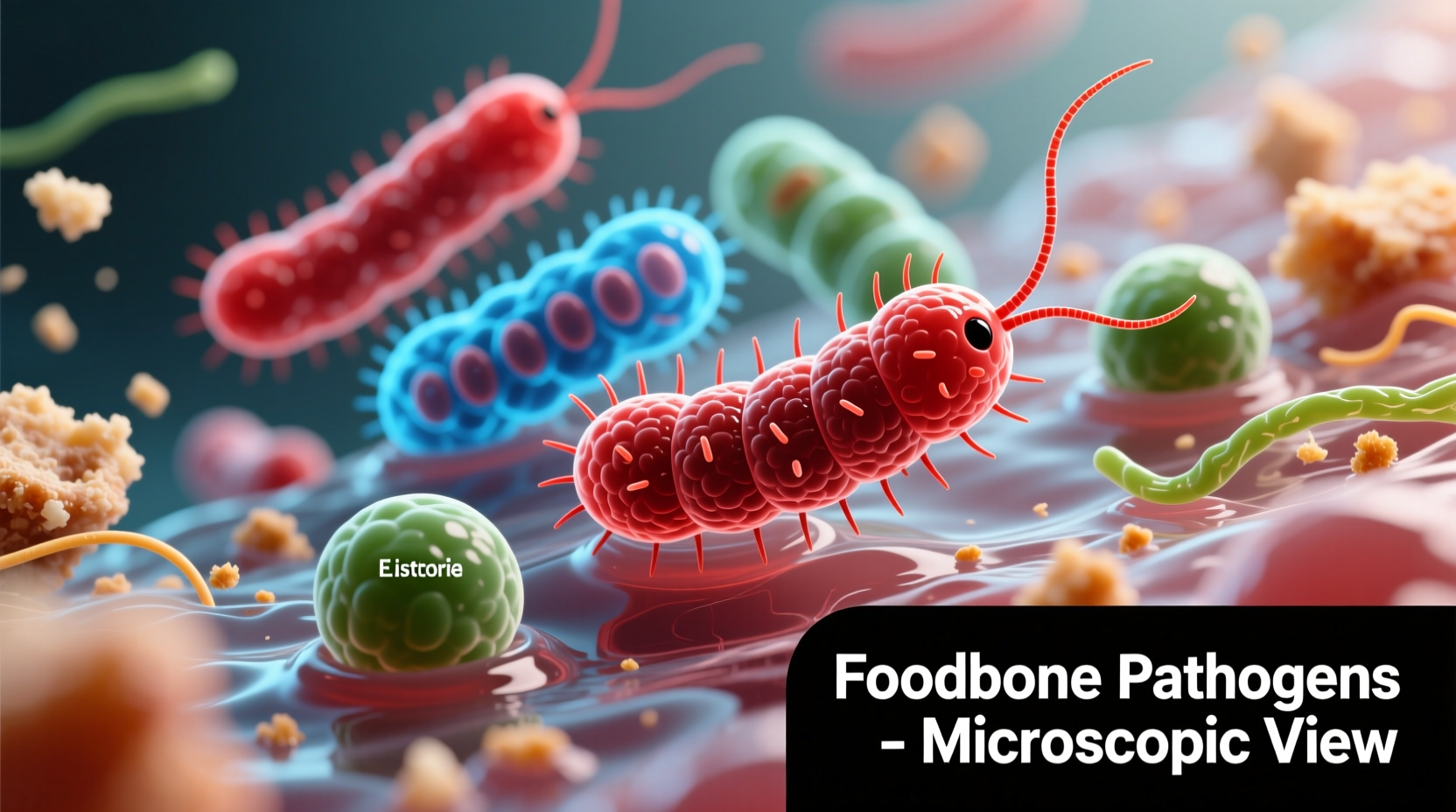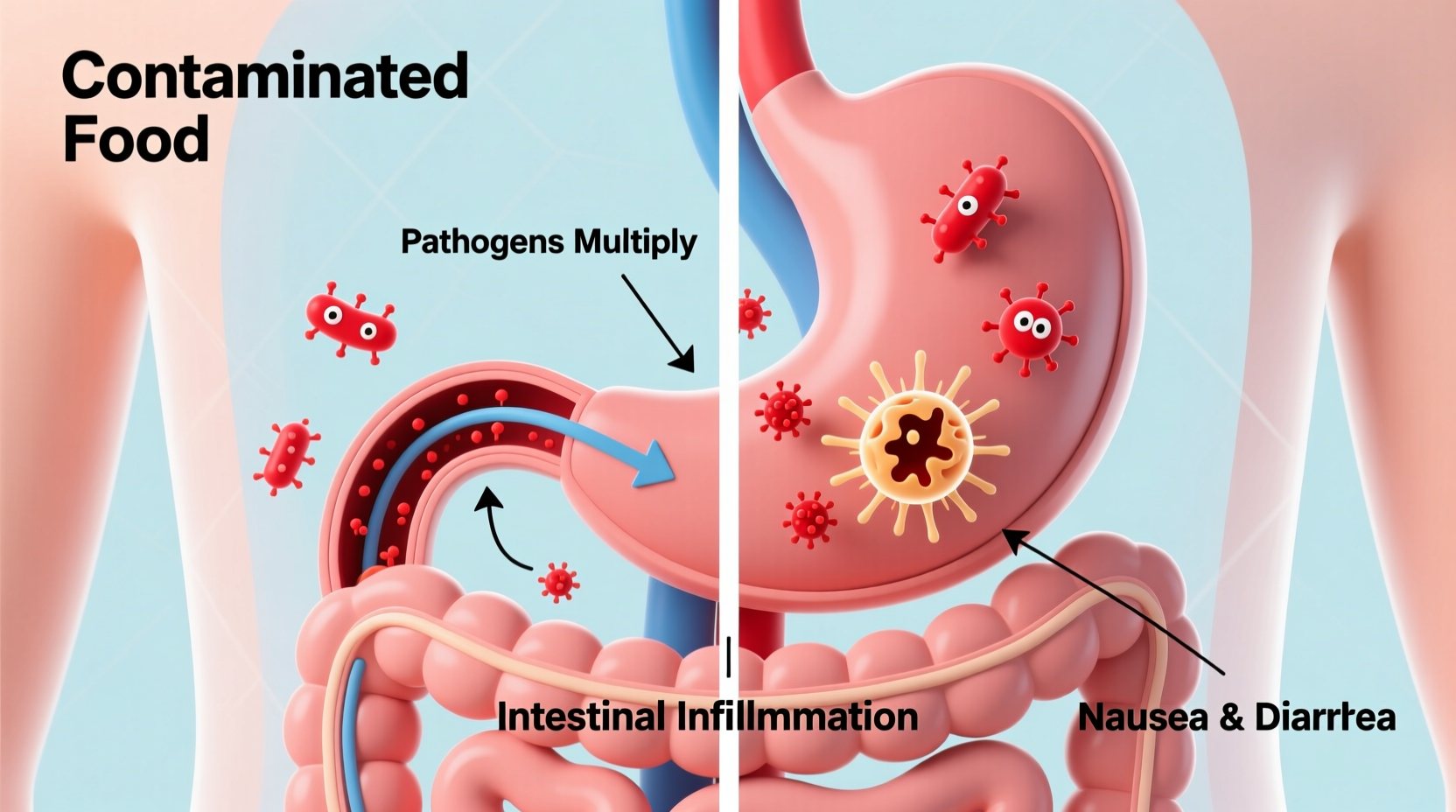Food poisoning occurs when harmful bacteria, viruses, or toxins in contaminated food invade your digestive system, triggering inflammation and fluid secretion that leads to nausea, vomiting, diarrhea, and abdominal cramps within hours of consumption. Your body's immune response to these invaders causes the uncomfortable symptoms as it attempts to expel the contaminants.
Ever wondered exactly what happens inside your body when that questionable sushi roll or undercooked chicken turns your stomach into a war zone? Understanding how food poisoning works isn't just morbid curiosity—it's your first line of defense against future gastrointestinal emergencies. When you grasp the biological battle happening in your gut, you'll make smarter food safety decisions and recognize when symptoms require medical attention rather than just riding it out with toast and ginger tea.
The Biological Chain Reaction: From First Bite to Bathroom Dash
Food poisoning isn't a single event but a carefully choreographed biological invasion. The process begins the moment contaminated food passes your lips. Pathogens like Salmonella, E. coli, or norovirus survive your stomach's acidic environment—some even thrive in it—then move to your intestines where they multiply rapidly. Certain bacteria like Staphylococcus aureus release pre-formed toxins that immediately irritate your gut lining, while others like Campylobacter actually invade your intestinal cells, causing inflammation and fluid secretion.
Within hours, your immune system detects these invaders and launches countermeasures. White blood cells flood the area, releasing chemicals that increase intestinal permeability and trigger muscle contractions. This biological alarm system causes the classic symptoms: your stomach cramps as muscles contract violently, nausea signals your brain to expel contents, and diarrhea flushes out the invaders through increased fluid secretion. While uncomfortable, these symptoms represent your body's sophisticated defense mechanism working exactly as designed.

Pathogen Playbook: How Different Contaminants Attack
Not all foodborne illnesses operate the same way. Understanding these differences explains why some cases hit within hours while others take days to manifest:
| Pathogen Type | Mechanism of Action | Typical Incubation Period | Common Food Sources |
|---|---|---|---|
| Bacterial Toxins (Staphylococcus) | Pre-formed toxins in food | 30 min - 8 hours | Deli meats, salads, pastries |
| Invasive Bacteria (Salmonella) | Invade intestinal cells | 6-72 hours | Poultry, eggs, raw produce |
| Toxin-Producing Bacteria (E. coli) | Release toxins after colonization | 3-4 days | Undercooked beef, leafy greens |
| Viruses (Norovirus) | Replicate in gut lining | 12-48 hours | Ready-to-eat foods, shellfish |
Timeline of a Food Poisoning Episode
The progression follows a predictable biological sequence that varies by pathogen type:
- 0-8 hours: Toxin-mediated illnesses (like Staphylococcus) cause rapid symptom onset as pre-formed toxins attack the gut lining
- 6-72 hours: Bacterial infections (like Salmonella) multiply to critical levels before triggering symptoms
- Peak symptoms: Most severe during second day as immune response intensifies fluid secretion and muscle contractions
- Recovery phase: Symptoms gradually subside over 1-7 days as immune system eliminates pathogens
According to CDC surveillance data, norovirus accounts for 58% of foodborne illness cases in the United States, with bacterial pathogens like Salmonella and Campylobacter causing most hospitalizations. The incubation period serves as a crucial diagnostic clue—immediate symptoms suggest toxin exposure, while delayed onset indicates active infection.
Why Some Stomachs Survive What Others Can't
Ever shared a meal where only one person gets sick? Several factors determine your vulnerability:
- Immune status: Children, elderly, and immunocompromised individuals face higher risk as their defense systems respond less effectively
- Stomach acidity: Medications reducing stomach acid (like PPIs) remove a critical barrier against pathogens
- Gut microbiome: Diverse beneficial bacteria can outcompete invaders before they establish infection
- Dose exposure: Consuming even a few hundred E. coli cells can cause illness in susceptible individuals
Research from the National Institutes of Health shows that genetic variations in immune response genes explain why some people develop severe symptoms from minimal exposure while others remain asymptomatic carriers. This biological lottery means you can't assume yesterday's questionable leftovers will affect you the same way twice.
When Your Body Needs Backup: Critical Warning Signs
While most food poisoning resolves within days, certain symptoms indicate your biological defense system needs medical reinforcement:
- Diarrhea lasting more than 3 days despite hydration efforts
- Blood in vomit or stool (signaling intestinal damage)
- Signs of severe dehydration (dizziness, minimal urination)
- Fever exceeding 102°F (38.9°C)
- Numbness or muscle weakness (possible botulism)
The FDA emphasizes that high-risk groups—including pregnant women, infants, and immunocompromised individuals—should seek medical evaluation at the first sign of foodborne illness. What might be a 24-hour stomach bug for one person could become life-threatening dehydration or systemic infection for another.
Applying This Knowledge: Smarter Food Safety Decisions
Understanding how food poisoning works transforms abstract food safety rules into meaningful biological protections:
- Cooking temperatures matter: Heating poultry to 165°F (74°C) destroys Salmonella's heat-sensitive proteins
- Cross-contamination prevention: Separate raw meats because E. coli needs only microscopic transfer to cause infection
- Refrigeration timing: Bacteria double every 20 minutes at room temperature—never leave perishables out more than 2 hours
- Handwashing technique: Proper soap friction removes norovirus's protective capsid that resists alcohol sanitizers
Armed with this knowledge of the biological mechanisms behind foodborne illness, you're not just following arbitrary rules—you're strategically disrupting pathogens' invasion process at every stage. This scientific perspective makes food safety practices feel purposeful rather than precautionary.











 浙公网安备
33010002000092号
浙公网安备
33010002000092号 浙B2-20120091-4
浙B2-20120091-4